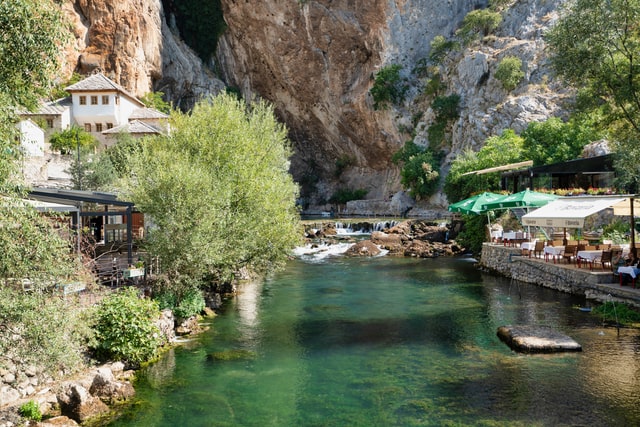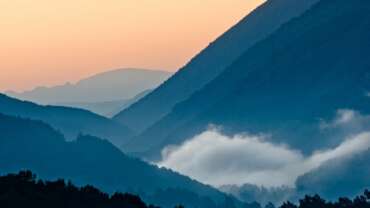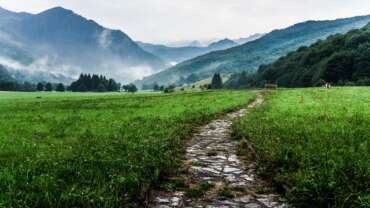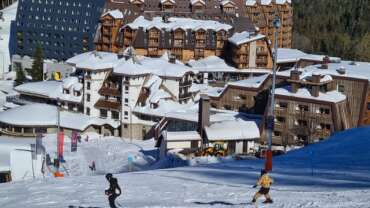Experiences in Bosnia and Herzegovina
Sarajevo: The Capital of Bosnia
Sarajevo is the capital of Bosnia-Herzegovina and is the focal point for most of the nation’s cultural and urban activities. It is surrounded by the Dinaric Alps and sits upon the Miljacka River. Although much of the city center is quite flat, Sarajevo is surrounded by hilly neighborhoods. Some of these are amongst the oldest regions of Sarajevo.
Snowy Winters and Hot Summers
Sarajevo is affected by both the continental European climate from the North, and the Mediterranean climate from the South. The city’s postcard-perfect winters contributed greatly to the selection of Sarajevo as the site of the 1984 Winter Olympics. The coldest month of the year is January, which is the only month of the year that typically reaches below 0° C (32° F). July is usually the warmest month and provides excellent weather for summer activities as well.
Read More
From a Few Small Villages to a Cornerstone of the Ottoman Empire
Sarajevo is rich in cultural and religious diversity. Longstanding traditions in Catholicism, Islam, Eastern Orthodoxy and Judaism blend together to make the city arguably the most eclectic cultural mix of all the capitals of Europe. The toll of the cathedral bells and the distinct sound of the calls to prayer from the mosques add to the overall experience, making it easy to feel that you have slipped back centuries in the past.
While the history of the city has roots all the way back to the prehistoric period, today’s Sarajevo is in many ways defined by the occupation by the Ottomans in 1461. A cluster of small villages transformed into a fledgling city with a mosque, a marketplace, a hostel, and the governor’s palace. The governor’s palace, known as a Saray in Turkish, is of special importance as it is Saray Ovasi (the fields around the governor’s palace) which gives Sarajevo its name.
Sarajevo grew quickly and by the mid-1600s the population had swelled to about 80,000. At the height of the population boom, it became the second largest in the Ottoman Empire. At the end of the 17th century tragedy struck and almost the entirety of Sarajevo was burned to the ground. Only a handful of smaller boroughs, an orthodox church, and a few mosques survived. For the next 100 years, a series of other fires ravaged the city as well.
Despite it’s Turbulent History, Today’s Sarajevo Shines
Bosnia was occupied by Austria-Hungary in 1878 and was soon assimilated into the Austro-Hungarian empire. Much of the architecture in Sarajevo’s city center still reflects this. Several of the buildings that form the skyline along the river Miljacka are strongly reminiscent of those found in Vienna.
Already no stranger to tragedy, much the 20th Century was particularly harsh for Sarajevo. The city suffered through three wars — World War I and II, as well as the conflicts and siege of the ’90s. Although much of the city was in ruins at the close of the millennium, an intensive effort to rebuild the city has transformed Sarajevo once again into one of the jewels of Europe, with little to hint at the previous destruction in the city’s center.
Getting To Sarajevo
Sarajevo has a small international airport with regular flights from a number of European capitals. It is serviced by several European airlines including JAT Airlines, Alitalia, Lufthansa, Croatia Airlines, Czech Airlines and Bosnia’s own national carrier, BH Airlines. As there are currently no direct flights to Sarajevo form North America, air travelers to Bosnia & Herzegovina from the United States and Canada need to make at least one stop elsewhere on the continent.
You can easily get to Sarajevo by train from Budapest, Zagreb, Ploce, and Mostar. The city is also accessible by major bus lines from numerous destinations. Sarajevo has two major bus stations, one of which is in a suburb of Sarajevo and is easily accessible to the city center by taxi.
Getting Around Sarajevo
Sarajevo itself has a well-developed transportation network of buses and trams. You can buy a ticket from one of the tram drivers or from a kiosk located near major stops. Taxis are readily available as well and are reasonably priced.
If driving around Sarajevo and the surrounding regions, be wary of the steep mountain roads, many of which are dirt, and of asphalt roads in disrepair. Keep in mind that names of towns around Sarajevo have been changed significantly in the past decade, and traveling outside of Sarajevo can get confusing. Fortunately, Sarajevo and the major nearby towns surrounding it are connected by well-traveled roads.
Mostar: The River City
Mostar is the fifth-largest city in Bosnia and Herzegovina and has an interesting history as well as a striking layout. The famously divided city spans both sides of the Neretva River, with a vibrant community of Bosniaks and Croats occupying either side of this city. Connecting the two regions is the Old Mostar Bridge, which was constructed in 1566 .
Getting There
Fly directly to Mostar International Airport, or take the train from Sarajevo or Ploce on the Croatian coast. When traveling by train to Mostar, keep in mind that timtables may be unusual or infrequent, and taking the bus may be an attractive option.
If you are interested in traveling to and from other towns of interest like Blagaj or Podvelezje, there are plenty of local bus routes that connect the towns each day. If you’re looking for a local bus, you won’t miss it: they are painted a vibrant yellow!
Read More
Things to Do and See
The Old Mostar Bridge (Stari Most) is a UNESCO World Heritage Site and a major tourist destination. The Old Mostar Bridge was completed in 1566 after nine years of planning and building. Designed by the Ottoman architect Mimar Hayruddin, this bridge stood for 429 years without fail.
This bridge was destroyed as a result of the conflict in Bosnia and Herzegovina, but was reconstructed with collaboration from UNESCO, the World Bank, and the City of Mostar. On July 23, 2004, the bridge was reopened. Not only is it a testament to incredible engineering and design, but to the healing of Mostar after ethnic division.
Take stroll in the Old Bazar Kujundziluk near the Neretva River and Old Mostar Bridge in this pedestrianized area of the old city. Stop by the artisan’s tiny stalls as well as handicraft shops offering carpets, jewelry, traditional garments, scarves and pipes. Be sure to bring your camera—the Old Bazar Kujundziluk is in the oldest part of Mostar.
Go to the “Turkish House” to be treated to the architectural splendor of Mostar’s past. As it is located near other points of interest such as mosques and historical structures, make it a day destination and don’t forget to give the city a donation when you visit! Don’t forget that it’s customary to remove your shoes when you enter these buildings.
Walk by Tito’s Palace. This building is empty and desolate, but it serves as a one of the greatest reminder of Bosnia and Herzegovina’s turbulent past.
Places to Stay
Hotel Ero
Dr. Ante Starcevica 88000
Hotel Ero is a popular place to stay for tourists. You can travel to the town in about 10 minutes—plenty of opportunity for sightseeing—and visit cafes along the way. If you will be arriving by bus, stay at the Hotel Ero, which is located close to the bus station.
Hotel Bristol
Mostarski Bataljon
The Hotel Bristol is conveniently located in the center of Mostar, along the banks of the Neretva River. You can get a great view of the river from your hotel room, which will be cozy and quiet.
Private Homes
When you arrive in Mostar, you will see that many families offer accommodation in their home for private stays. If you organize your stay in advance, you can have your host meet you at the bus station and take you to your accommodation. You will save money while steeping yourself in the culture of Bosnia and Herzegovina.
Getting Around
If you like to walk, Mostar is perfect. Most points of interest are quite close to one another, making travel around the city very easy.
Medjugorje: A Spiritual Destination
Medjugorje is the city in Bosnia and Herzegovina for relaxation, religious reflection, and cultural sightseeing. This small parish is made up of five villages, where the Virgin Mary is believed to have appeared to six Croatians in 1981. Shrouded by mystery, Medjugorje has drawn visitors from around the world.
Getting There
Today, you can travel most easily to Medjugorje with a pilgrimage group. If Medjugorje attracts you due to its religious significance, you can save money and lots of planning time by booking one of these special trips.
Read More
If you prefer to travel alone, book a regular flight connecting in Central Europe from carriers such as KLM, Lufthansa, and Alitalia. Land in Croatia and book a bus trip to Medjugorje, which should take about three hours. Get a window seat! The beautiful views of the Adriatic coastline are unforgettable.
Another travel option is to fly to Sarajevo and take the train to Mostar. Sarajevo is considered the most oriental city in Europe, with cafes and plenty of public transportation. Take advantage of this city before heading to Medjugorje to relax.
You can also rent a car to travel through Medjugorje’s mountains. Arrive in Mostar by international flight on British Airways,
Croatia Airlines, Adria Airlines, or Alitalia. Rent a car from this charming city to drive to Medjugorje. While car rentals can be expensive, they are worth it to enjoy the natural splendor that Medjugorje has to offer.
Things to Do
Medjugorje is a common attraction for Catholic pilgrims, who visit Apparition Hill where Mary was reported to have been seen. Visit St. James Church in Medjugorje for a moving service in a beautiful setting. Since this town attracts a wealth of foreigners from all corners of the globe, you can always expect a diverse attendance at St. James.
Visit the Kravice waterfalls. Not only is it a perfect place to hike and fish, but it’s also a great place to swim. Relax in the cooling mist that surrounds the area after noon. You won’t be in the middle of nowhere, though: there is a restaurant near the falls where you can still hear the rush of the waterfall in the air. It is recommended that visitors hire a guide to avoid getting lost and get you on your way to enjoying Medjugorje.
Take a day trip to a nearby town like Mostar or Pocitelj, where you can take in more of the rich Bosnian culture and history.
Places to Stay
Pax Hotel
This three-star hotel offers reasonable accommodation, and often serves the many pilgrims who are drawn to Medjugorje. If you are visiting as a pilgrim, you can network with other from locations around the world.
Globtour Inn
The Globtour Inn has a young atmosphere with welcoming staff. It’s another popular hotel for pilgrims, but even if you’re not, you’ll enjoy the community atmosphere!
Reminder: If you want to travel to Medjugorje, remember that you must enter Bosnia with a passport. American citizens can stay in Bosnia and Herzegovina for up to three months without a visa. If you plan a home stay with locals, you need to register with the police within 24 hours of arrival.
Neum: Seaside Resort on the Adriatic
One of the amazing things about Bosnia is that you can experience so many different climates in such a small region. Little known is the fact that not far from the snowy peaks of its’ mountain tops is a true seaside resort. Nestled in a small cove out of reach of the strong winds coming off the Adriatic is Neum, a gem of Bosnia and Herzegovina.
Neum is Bosnia’s only town located on the Adriatic coast and a top resort vacation for savvy travelers who want to enjoy the sun without the major crowds of other locations. For quite a small strip of land, it has gained popularity steadily over the past years. The glittering bay offers a lot of opportunities for water sports and tanning, in a fairly secluded location.
Getting There
Travel to Neum by land through the single connection from the hinterlands. You can take the tiny two-lane road through Hutovo to get to this hidden spot, but be careful. Roads can be tricky and drivers can be somewhat unpredictable, so take it slow and take some photos along the way, too.
Read More
Things to Do
Go to Neum to take excursion boats out on the Adriatic Sea. The coastline is lush and dreamy, and you will feel relaxed amidst blindingly blue sea, tiny black islands, and plenty of sea birds for the avid watcher. Rent a jet ski to zoom along the coast and return in time for a light seafood dinner and a glass of Bosnia and Herzegovina’s national wines.
Visit Hutovo, located a short drive away from Neum. Revel in the secluded splendor of the mountains on your way to visit the ruins of Hadzibegova Kula Fortress. This ancient stone fortress originally defended the Ottomans from the Venetians, and this ruin is visible from the road. For those who love ruins, this day trip is a must-do while in the Neum area.
Drive to Dubrovnik for a quick trip from Neum. Go big game fishing for Yellow Tail Amberjack, Swordfish, Bluefin Tuna, and Dentex in the deep sea, and then take the afternoon off for a little hiking.
Where to Stay
You can find fabulous hotels in Neum located along the shoreline. These white, towering buildings are located right next to the seashore and offer sparkling water, a light breeze, and sunny days with a relaxed atmosphere.
This area was once reserved for members of the Bosnian elite, but international tourism is back. Major hotels offer packages for lessons, classes, and certification, as well as discounts for rentals. Take advantage of lots of water sports activities, including boating, jet skiing, swimming, and parasailing, for less when you book your hotel room in Neum.
Top hotels include:
Hotel Sunce
A modern hotel in a resort setting near bright blue waters of the Adriatic Sea. Hotel Sunce organizes trips to all the major tourist destinations in and around Neum for your convenience.
Hotel Adria
This four-star hotel has 12 apartments and 8 rooms, and is located right off of the seashore. Be sure to dine in their excellent restaurant to sample traditional cuisine.
Jablanica: Seclusion in the Mountains
To many visitors to this area, it is one of the most beautiful regions in Bosnia and Herzegovina to visit. Jablanica is found close to the sparkling, fast-running Neretva River.
Tucked into the peaks of Cvrsnica and Prenj Mountains, Jablanica also benefits from a somewhat mild climate that ranges between the Mediterranean and Continental, which means a mild summer and even wintertime precipitation.
Jablanica has a rich history. During Word War II, it was the site of the Battle of Neretva, where the Partisans managed to win a very unlikely battle. Today, the remains of the destroyed bridge still remain as a symbol of wartime difficulties and sacrifice.
Read More
Getting There
Jablanica is a secluded location, but it’s surprisingly easy to get to. You can take a bus to Jablanica from Mostar. One possibility to make your travel seamless is to first fly to Sarajevo via Zagreb on a carrier such as Croatia Airlines, or take a direct regular flight on KLM, Lufthansa, or Jat Airways.
Rent a car in Sarajevo and take the scenic one hour’s drive there. When traveling in these mountainous regions, use extreme caution, particularly in the wintertime. Bosnian drivers are comfortable with roads that may seem even perilous to unaccustomed drivers.
Things to Do
Stop by the War Museum, which is located near the ruined bridge of Jablanica. The War Museum is dedicated to the battle during World War II, and provides an impressive collection of photographs to tell the story of this heroic event.
Visit the War Memorial located on the top of Mount Prenj. On your way back, try an authentic meal of lamb, which is served at stands dotted along the roadsides. Later, have a quiet meal along the eastern bank of the Neretva River. A converted German bunker serves tasty meals in their restaurant, or plenty of hot drinks in their cafe if your prefer.
Take a day to visit Jablanica Lake. Not only are there lots of restaurants to choose from, but there are lots of accommodation options and diversions. Walk down the main road after dining out to see the locals’ catch of the day from Jablanica Lake. Take a picture of some massive trout, carp, and bass!
Where to Stay
Jablanica Hotel
Stay in the Jablanica Hotel to explore this small city full of history. With a tiny park located behind the hotel and very comfortable rooms, you’ll want to spend more than just one day in this charming town. Speak with the friendly staff while you’re there to learn more about the city and its history. Whether you’re a war buff or a culture fan, spend a few days in Jablanica to indulge yourself.
Campsites and Lakeside Hotels
If you fancy a leisurely stay by the lake, consider camping. You can pitch a tent if you are feeling adventurous, or perhaps book one of the many private rooms, lodges, and hotel suites.
Getting Around
Jablanica’s small size makes it a great place to walk with your family. Enjoy the quaint city, and then drive to Jablanica Lake for a day trip.
Banja Luka: Urban Center of Republika Srpska
Banja Luka, the second largest city in Bosnia-Herzegovina, is located along the Vrbas River in northern Bosnia. Banja Luka is a historical gem, and despite its tumultuous history, retains a natural beauty that visitors have begun to rediscover.
Banja Luka has a continental climate, making it ideal for travel in the summer months. Warm weather and surrounding woodlands make it tempting for nature enthusiasts and hikers to head out and explore, but they mustn’t forget about the central city of Banja Luka. It combines a warm student atmosphere with a rich culture that offers a tiny bit of diversion for every traveler.
Read More
Traveling There
Banja Luka does have an international airport, so rest assured! You can arrive by air, although you are advised to plan your itinerary in advance. Fly from Zurich, Switzerland, or Istanbul, Turkey a few times a week to enjoy your stay in Banja Luka.
For the classic European travel experience, get to Banja Luka by train. You can connect from points in Europe, Belgrade, Serbia or Zagreb, Croatia to reach Banja Luka. If you are feeling up for a challenge, try the international bus service from Slovakia, Germany, Croatia, Italy, France, or Austria—just to name a few! If you like to meet people when you’re traveling, the bus is the best way to do it.
Things to Do
When you arrive in Banja Luka, you’ll want to have a stroll and see what the city offers. It has an incredibly rich mixture of preserved architecture and slightly aged relics that give Banja Luka a unique charm. You won’t want to miss Banski Dvor, the Halls of Ban, which was actually built as a stately home for the Ban family. Today, it houses the National Assembly, concert hall, gallery, and restaurant. You can schedule an entire day’s worth of cultural activities there, and once you see this beautiful, centrally located building, you’ll want to.
Other stops in Banja Luka could include the Kastel Fortress in the city center. Located near the picturesque Vrbas River, you can enjoy a quiet meal with an outstanding view. You’ll have a lot of opportunities to record breathtaking panoramic views, so just don’t forget your camera!
Getting Around
If you are new to Banja Luka, take a taxi for a no-hassle experience. There are very economical and are especially helpful for those getting to know the city. If you are feeling more adventurous, try taking the bus. They may be crowded, but you will get where you need to go for even less—and blend in with the locals!
Appreciate the Culture
The Republika Srpska is known for its friendly people, and Banja Luka is no different. Explore the local houses and suburbs for a taste of true local life, and try to schedule a home stay or visit while you’re there.
Tuzla: Northeastern Getaway
Tuzla serves as the hub of scientific, economic, cultural, educational, and touristic center of Northeast Bosnia. It is found near the slopes of the Majevica Mountain, and offers outstanding views, tiny streets, and a peek into the old life in Bosnia.
Getting There
Travel by bus to reach Tuzla easily. Bus schedules are very reliable, and you can take one of the three bus trips that leave for Tuzla every day from Zagreb. While there is a small airport in Tuzla, you can save money by flying to Sarajevo and driving from there. It will take three hours, and while mountain driving can be a little harrowing, you’ll have fabulous views. Drive from Zagreb for four hours for better road conditions, if you don’t mind a longer drive!
Read More
Things to Do and See
Head to the Korzo, the downtown area of Tuzla. Enjoy the pedestrianized streets for a good walk and to take in the sights along the way. You’ll find street cafes, musicians, and lots of opportunities for shopping! When you reach the main square, you ‘ll see the big fountain located in the center that provides the city with water.
If you stay in Tuzla during the summertime, visit the Tuzla Wave Music Festival. You can head to lots of presentations and events during this month-long event, which draws in an international audience. Get a program and go to various downtown locations to mix with the locals.
Take a trip to visit the sacred destinations in Tuzla, including the Orthodox Cathedral, the Franciscan Monastery of the Holy Apostles, and the 20 churches that dot the area. The Franciscan Monastery a breathtaking bell tower which affords fabulous views of the city and surrounding land. Just ask a monk for access to the tower, and don’t look down! Visit the mosque of Dzindi, which is the oldest in Tuzla.
If you are in the mood for a walk, take a stroll in one of the neighborhoods located in the hills. Go to Mosnik by traveling to the Korzo and crossing the Jala by going over the bridge. Walk North up the hill in Mosnik for a view of traditional neighborhoods.
Places to Stay
Hotel Tuzla
M Fizovica Fiska 15
Stay in this hotel for simple but elegant service. You will appreciate its proximity to lots of different touristic areas, including the Tuzla Salt Lake, located 10 minutes away.
Hotel Bristol Tuzla
Aleja Bosanskih Vladara
Hotel Bristol Tuzla has relatively low prices for accommodation located very close to the city center. Found on the historic and beautiful street of Aleja Bosanskih Vladara, Hotel Bristol Tuzla gives you easy access to artistic points of interest and lots of shops.
Choose a home visit or a private bed and breakfast for more individualized service when you arrive.
Getting Around
Tuzla has a reliable city bus system comprised of two zones. The first zone covers a 1 km radius and will serves tourists well. You can also walk around the city for the best sightseeing opportunities.
Take a cab around the city for low cost. Some cabs travel on the bus routes, stopping at bus stops only. In order to get a cab to stop at your home, you’ll need to pay extra. With all the steep hills in Tuzla, it could be worth it!






